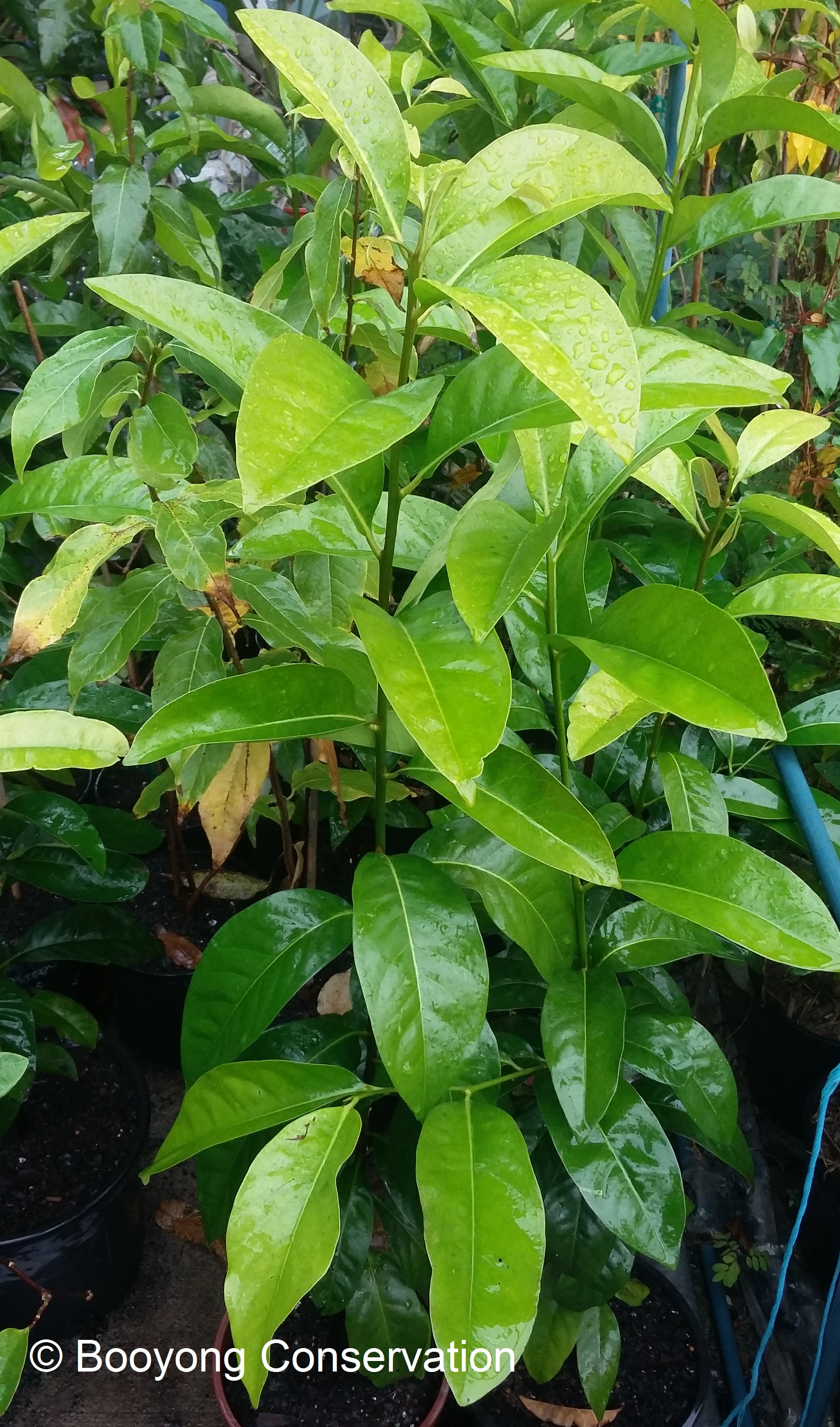We were intrigued when our friend and neighbour Greg gifted us with a Chocolate Pudding Fruit (Black Sapote). We’ve had it in the ground for a couple of years and are patiently waiting to try one! The Black Sapote’s is a native to Mexico and a relative of the custard apple and the persimmon, apparently the fruit is very sweet, low in fat and very high in vitamin C. I’m yet to have had the fortune of trying a black sapote and am keeping my eye out for the opportunity while we patiently wait for our tree to bear fruit.
They prefer to be grown in full sun whenever possible and are tolerant of water and sensitive to drought, liking a fast draining soil. It is recommended to feed with a weak liquid fertilizer (Citrus fertiliser) throughout the growing season. To be honest we have done very little to care for our Chocolate Pudding fruit and it appears to be doing quite well. It is a beautiful evergreen tree with large and glossy leaves, a delight to have in the food forest. As the plant grows, we will trim and shape as required. Black sapote are vulnerable to pests including aphids, mealy bugs, scale, and whitefly, so we will certainly keep our eye out and treat if required. No companion plants have been identified at this time.
When it finally fruits, we will expect the size of a large apple and they will weigh between 700 – 900 grams. You pick the fruit when hard and it will soften and turn brown within 3-6 days. When the fruit is edible, you’ll be able to poke it with your finger and leave an imprint. A black sapote ripens soft and mushy with the skin turning from bright green to dark brown. Do not refrigerate until ripe. When you open it, the pulp has a similar in taste and texture to Chocolate Pudding – thus the name. Ripe fruit or pulp may be refrigerated for a few days, however, freezing is better. Frozen whole fruit or pulp retains its subtle flavour for more than six months, and frozen pulp is suitable for use in any recipe.
Too eat you apparently cut it in half and scoop out the pulp with a spoon (taking out any seeds). The fruit is meant to be delicious eaten fresh or used as a chocolate substitute in recipes and milkshakes or simply mix the pulp with yogurt and lemon juice for a refreshing treat. It also mixes well with yoghurt, coconut milk and cream, honey and ginger as well as oranges. Furthermore, flavour is said to be enhanced by the addition of a little rum, vanilla, cream or coffee liqueur (Kahlua or Tia Maria). It also makes a delicious ice cream and is also great in mousses, cakes, cheesecakes, muffins, bread and preserves.
